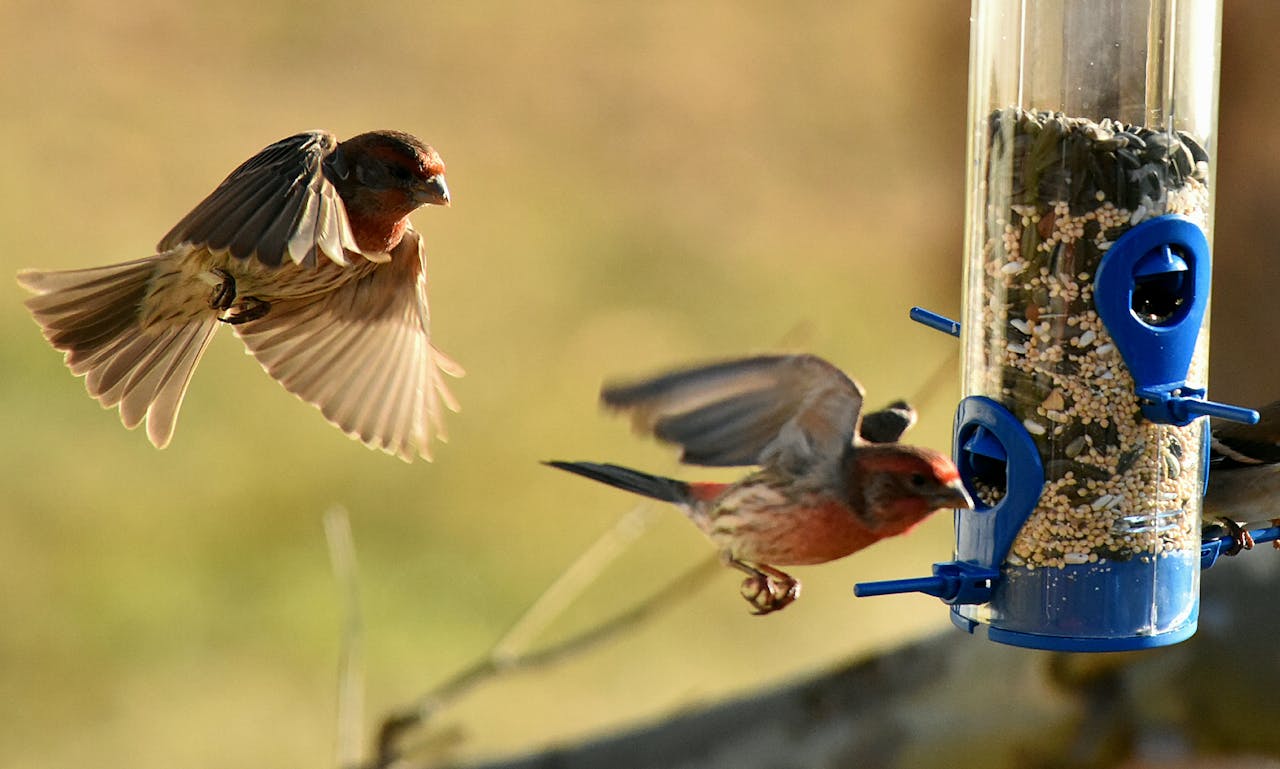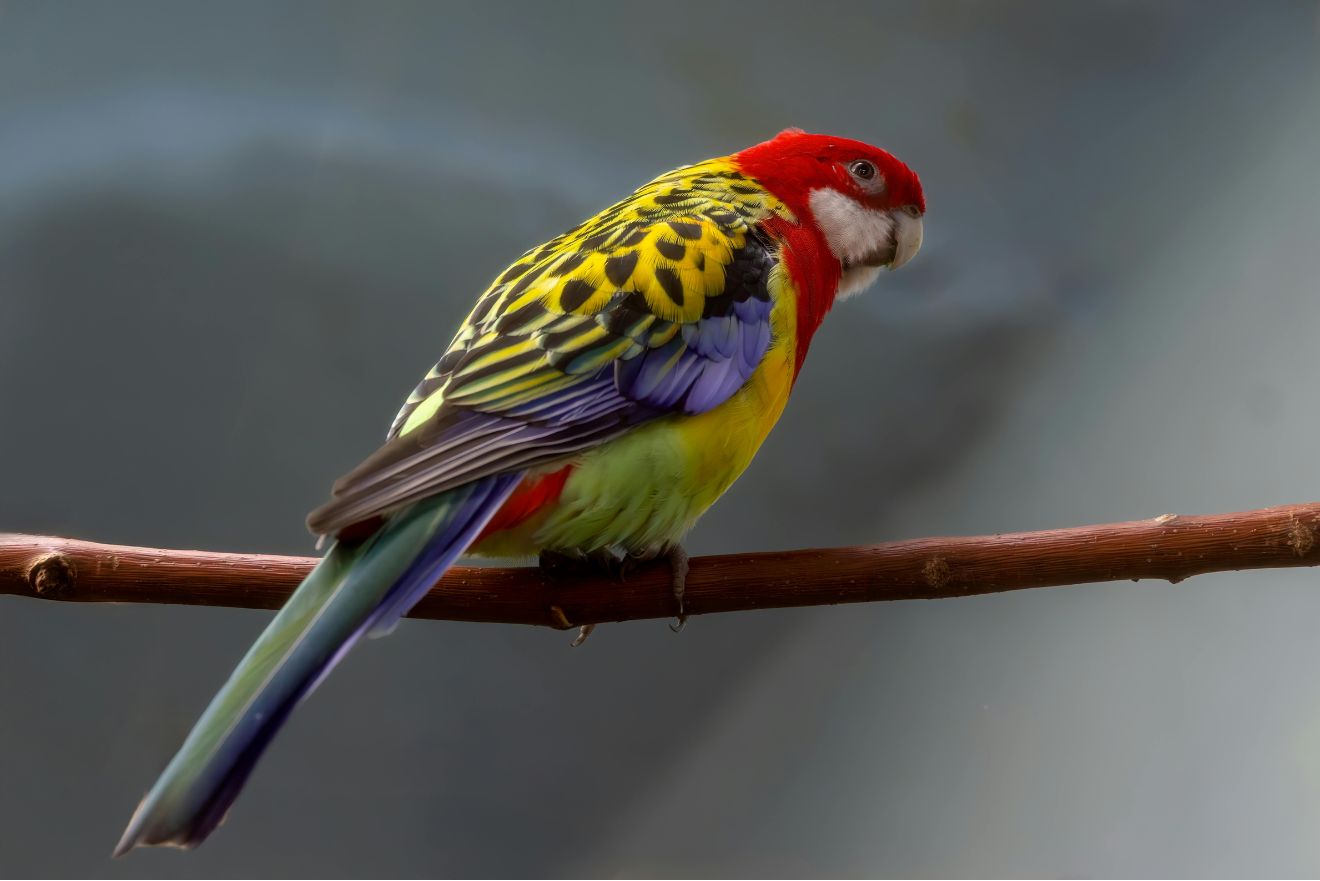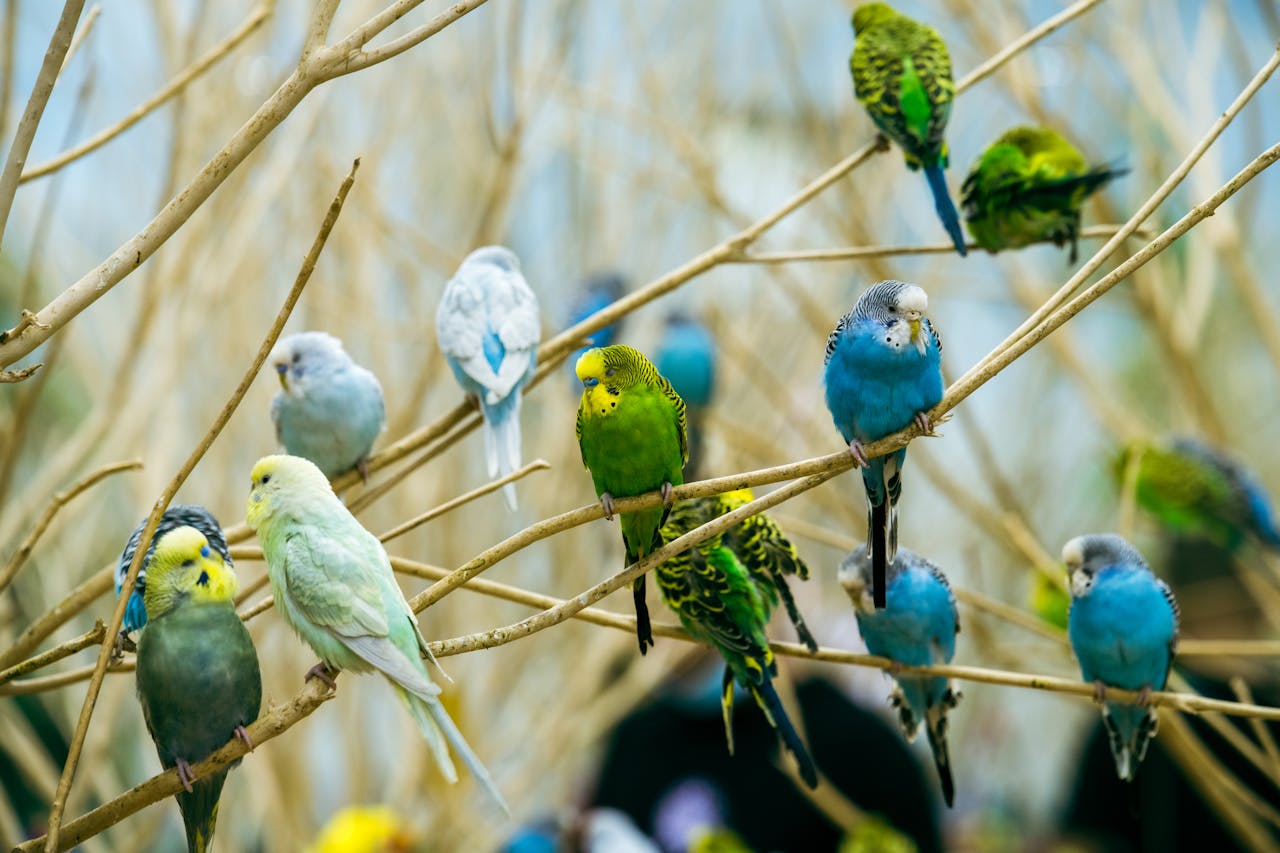Finches may be tiny, but their vibrant colors, cheerful songs, and lively personalities make them beloved pets around the world.
These charming birds are perfect for those who want a low-maintenance, visually delightful companion that thrives in pairs or groups.
This comprehensive guide explores everything you need to know about caring for finches—from their natural traits to housing, diet, and common challenges.
Table of Contents
Introduction
Finches are small, active birds known for their melodic chirping and vibrant plumage. Unlike parrots, finches are not known for interaction or speech, but they make excellent pets due to their beauty, calm demeanor, and ease of care.
They’re ideal for first-time bird owners or those who enjoy watching birds more than handling them.

Origin and Natural Habitat
Finches are found across the globe, with different species native to Africa, Asia, Australia, and the Americas. For instance:
- Zebra Finches are native to Australia and thrive in arid grasslands and open forests.
- Gouldian Finches, also from Australia, live in tropical savannas.
- Society Finches are domesticated and have no known wild ancestors.
These birds typically live in flocks and build nests in bushes, trees, or crevices.
Physical Traits: Size, Color, and Lifespan
Size: Most finches are very small, ranging from 3 to 6 inches (8–15 cm) in length.
Color: Depending on the species, finches display a range of colors—Zebra Finches have grey bodies with black-and-white striping, while Gouldian Finches come in brilliant hues of green, red, yellow, and purple.
Lifespan: Finches live about 5 to 10 years with proper care.
Unique Traits of Pets
Finches are admired for their:
- Beautiful Songs: Males often sing to attract mates and establish territory.
- Low Maintenance: They don’t require training or social interaction with humans.
- Group Living: Finches are happiest when kept in pairs or small flocks.
- Active Behavior: They love to hop, flutter, and explore their space.
While not cuddly, they are captivating to watch and listen to.

Choosing the Right Finch
Popular pet finch species include:
- Zebra Finch: Hardy, inexpensive, and easy to care for.
- Society Finch: Calm, social, and bred for domestication.
- Gouldian Finch: Beautiful but more sensitive and best for experienced owners.
Choose active birds with clear eyes, full plumage, and smooth breathing. Always buy from a reputable breeder or pet store.
Diet and Nutrition
Finches require a balanced diet of:
- Seeds: A staple base, but not sufficient on their own.
- Pellets: Offer additional nutrients not found in seeds.
- Fresh Foods: Leafy greens (spinach, dandelion), grated carrots, and small fruit pieces (apple, pear) a few times a week.
- Protein: During breeding season or molting, offer egg food or mealworms.
Ensure access to clean, fresh water at all times.
Housing and Environment
Finches thrive in roomy cages that allow flight:
- Minimum Cage Size: 30 inches long for a pair; horizontal space is more important than vertical.
- Cage Setup: Include perches of various sizes, swings, and shallow food/water dishes.
- Location: Place the cage in a quiet, well-lit area away from drafts and direct sunlight.
Finches love a consistent daily routine and natural light-dark cycles.

Grooming and Hygiene
- Bathing: Provide a shallow dish of water for bathing several times a week.
- Nail and Beak Care: Usually maintained naturally, but rough perches help.
- Cleaning: Clean the cage, perches, and dishes weekly to prevent illness.
Fun Facts About Finches
- Zebra Finches are used in scientific studies because of their vocal learning abilities.
- Males sing to impress females and to define territory.
- Finches can recognize their mate’s call even in a crowded flock.
- Gouldian Finches are known as “Rainbow Finches” for their multicolored plumage.
Training and Socialization
Finches are not trainable like parrots, but can be gently acclimated to human presence.
While they generally don’t enjoy being handled, consistent, calm behavior from you can make them more comfortable in your presence.
Common Health Issues
- Mites: Feather or air sac mites cause itching and respiratory problems.
- Egg Binding: Female finches may struggle to lay eggs, especially in poor health.
- Nutritional Deficiencies: A seed-only diet can cause weakness or feather loss.
- Avian Gastric Yeast: Leads to weight loss and poor digestion.
Regular vet checkups and a balanced diet help prevent these problems.

Breeding Information
Finches breed readily in captivity with the right conditions:
- Provide a nesting box and nesting material (like coconut fiber).
- The female usually lays 4–6 eggs.
- Incubation lasts 12–14 days, and chicks fledge after 3 weeks.
Avoid breeding without preparation, as it adds significant responsibility.
Signs of a Healthy Finch
- Bright, active behavior
- Smooth, vibrant feathers
- Normal breathing and chirping
- Good appetite and regular droppings
Interaction with Other Pets
Finches are peaceful and can coexist with other small, non-aggressive bird species. Never house them with larger birds like parrots or aggressive finches.
Always supervise interactions with cats, dogs, or children.
Noise Levels
Finches are among the quietest pet birds. They produce soft, melodic chirps, making them ideal for apartments or quiet households.
Unlike parrots, they don’t scream or mimic loud noises.

Challenges of Owning a Finch
- Not suitable for those wanting a hands-on pet
- Requires daily cleaning due to seed mess
- Can be sensitive to temperature changes
- Breeding requires extra care and space
Learn More About Bird Breeds
Finches are just one of many fascinating bird species. If you’re exploring the world of pet birds, dive into these detailed guides to find the perfect feathered friend for your lifestyle:
- Why Birds Make the Perfect Pets? – Discover why birds are intelligent, affectionate, and low-maintenance companions for modern homes.
- Macaws Majestic Pet Birds: Jewels of the Avian World – Learn about these large, colorful parrots known for their striking beauty and strong personalities.
- Cockatiels for Beginners: Tips to Keep Your Feathered Friend Happy – A complete starter guide to owning and caring for playful and affectionate cockatiels.
- Lovebirds Behavior & Bonding: Secrets to a Happy Pet – Explore the social nature, bonding habits, and care tips for these adorable little parrots.
- African Grey Parrots: Why They Are the Smartest Pet Birds? – Understand what makes African Greys highly intelligent and emotionally responsive birds.
- Parrotlets Care Guide: Diet, Training & Lifespan Tips for Owners – A handy resource on these tiny but fearless parrots, perfect for small spaces and big personalities.
- Canaries: The Ultimate Guide to These Melodic Singers in the Bird World – Appreciate the beauty and soothing songs of canaries, ideal for peaceful bird lovers.
- Amazon Parrots: Why They Are Among the Smartest Pet Birds – A look at these intelligent, playful parrots and what it takes to care for them.
- Budgerigars: Charming, Chatty, and Colorful Pet Birds – Get to know the world’s most popular pet bird, adored for its friendly nature and talking ability.
Understanding a variety of bird breeds will help you choose the best avian companion to match your home, lifestyle, and personality.
Conclusion
Finches are delightful, low-maintenance birds that brighten any space with their beauty and song. Although they are not hands-on pets, their social nature and energetic behavior make them a joy to observe.
Perfect for those who appreciate the simple pleasures of bird companionship, finches require minimal space but a lot of love and care.
With the right setup and diet, your finches can thrive and bring daily joy to your life.
FAQs
Are finches good pets for beginners?
Yes, they’re ideal for first-time bird owners due to their easy care and low noise levels.
Do finches talk?
No, finches do not talk or mimic human speech.
Can finches be kept alone?
Finches are social and should be kept in pairs or groups to prevent loneliness.
How long do finches live?
With proper care, finches can live between 5 and 10 years.
Do finches need a big cage?
They need horizontal space to fly, so a long cage is better than a tall one.




